Chapter 7 Statics And Dynamics Of Fluid Liquid And Gas Concept Of Pressure
You have come across the concepts of force, weight, and the measurement of area. A body on earth’s surface experiences the force of gravitational attraction and this gravitational force is called the weight of the body.
The weight of our body acts through our feet as we stand on the ground. Now imagine a situation wherein you are asked to walk on pebbles in bare feet.
It’s painful, isn’t it? Surely you would try to jump over to sand in order to get rid of the pain, as walking on sand is not painful.
Since you are the same in both cases (meaning your weight does not vary), what causes it to be painful to walk on pebbles rather than on sand? It’s the pressure. How is the pressure to be defined and measured?
amount of force that is put on your foot and the area over which the force is applied.
Read And Learn More: WBBSE Notes For Class 6 School Science
Since pressure = force/area, the same force on a smaller area means more pressure and vice versa.
When you are walking on sand, the weight of your body is spread out over the entire surface of your foot as the whole of your foot touches the ground as you walk on a flat surface like sand.
Therefore, there is relatively little pressure on any one point (since pressure = force/area). When you step on pebbles it is an entirely different story.
Pebbles have pointed projections that lead to a lesser contact area of your foot touching them while you walk on them. Instead of spreading the pressure over.
Important Definitions Related to Fluids
Pressure:
Force per unit area of surface is your whole foot, much more of the pressure is called pressure.
Pressure Force/Area.
The SI unit of force and area are Newton and square metres respectively. Hence SI unit of pressure shall be Newton per square meter.
It is also called Pascal or Pa. Multiple of Pascal is kilo Pascal.
1 kilo Pascal = 1000 Pascal = 1000 Newton per square metre.
Now we shall go back to the previous example and try to analyze what causes more pain to walk on pebbles than on sand and how is it related to pressure.
This is because of the applied to the small area that is actually touching the pebble. So, more pressure applied on a given area of your foot causes more pain.
Let us take another example. Try to hit two nails-one having a blunt end and another having a sharp end into a wooden block by a hammer.
You would observe that the sharp-ended nail penetrates the block more easily than the blunt-ended one.
Since the area of the sharp-ended nail is less compared to the blunt-ended one, it generates more pressure for penetration than the other nail and thus penetrates relatively easily.
A simple calculation will clarify the issue. Let us assume that the length, breadth, and height of a block be 3 m, 2 m, and 0.5 m respectively.
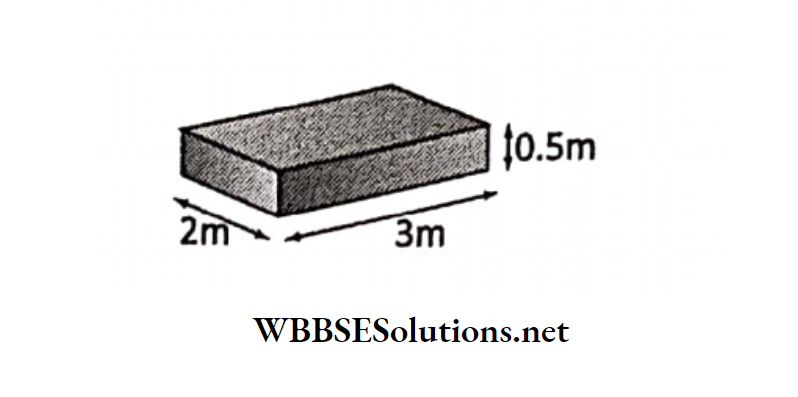
If the block weighs 60 N and is lying on a surface on its side with an area of 2 m by 3 m, what is the pressure exerted on the surface by its weight?
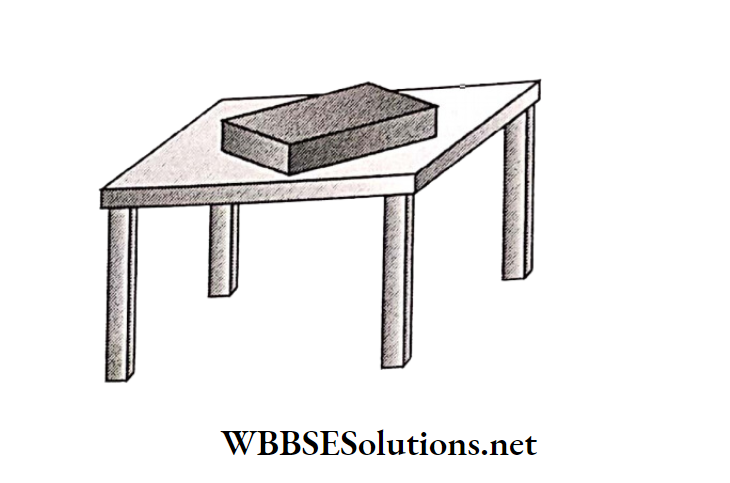
Pressure Force + Area.
So, P=60N+(2 mx3 m)=60N+(6 sq.m)=10 N/sq. m or Pa.
If the same 60 N block is now lying on its end which is 2 m x 0.5 m, then the pressure, biopic would be,
P = 60 N ÷ (2m x 0.5 m) = 60 N÷ (1 sq.m) = 60 N/sq.m or Pa.
Now you see that although the force remains the same, pressure increases by 6 times in the latter case as the area of the block coming in contact with the surface reduces by 6 times.
Chapter 7 Statics And Dynamics Of Fluid Liquid And Gas Application of Pressure
A few applications of pressure in our life:
1. A sharp knife cuts more easily than a blunt knife. That is why the cutting edge of a knife is made sharp.
A sharp cutting edge results in the cutting force distributed over a small area creating a large pressure. This makes cutting easier.
2. It is not easy to walk wearing high heel shoes. High heel shoes distribute a large amount of force in a small area and hence make it feel uncomfortable while walking on the ground.
3. Have you figured out why camels have large feet? Camels need to be able to walk around on sand without sinking into it. This means that they need to reduce their pressure on the ground.
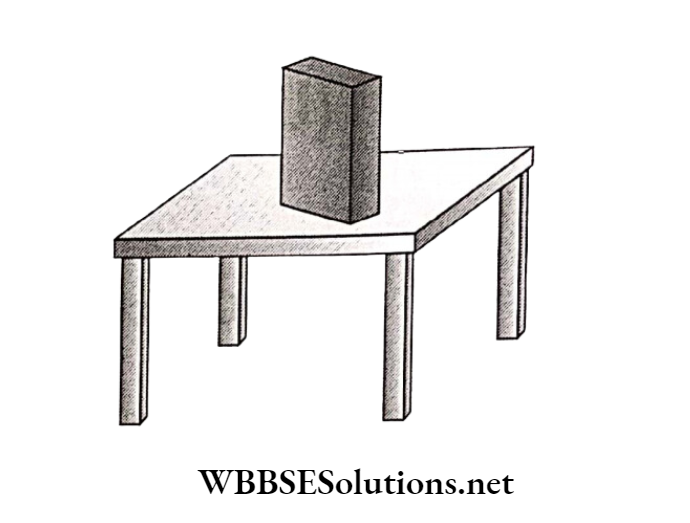
4. Porters place a round piece of cloth on their heads when they have to carry heavy loads. blu By this they increase the area of contact of the load with the head.
So the pressure on their head is reduced and they find it easier to carry the load.
5. Needles, screws, pins, and nails are made not sharp and pointed in order to reduce the Effective area of their working surface to generate more penetrating pressure.
This helps to pin up the papers or sew the cloth or penetrate planks, etc.
WBBSE Class 6 Fluid Mechanics Notes
Chapter 7 Statics And Dynamics Of Fluid Liquid And Gas Pressure in Fluids
Any substance which has no fixed shape and can flow is called fluid. All liquids and gases are regarded as fluids.
Do fluids exert pressure? Does it also depend on the area on which the force acts? We have seen that a solid exerts pressure on another surface on account of its weight.
Similarly, a fluid has weight and hence, it exerts pressure on the walls of the container in which it is kept or enclosed.
It may be demonstrated as shown in means that they need to reduce their Dit pressure on the ground. Large feet mean a large area of contact and thus less pressure.
A piece of thin and good quality rubber sheet may be tied tightly over at one end of a long glass tube.
While holding the glass tube in the middle and in an upright condition, some water may be poured into the tube.
It would be seen that the rubber sheet would bulge out indicating that Statics and Dynamics of Fluid (Liquid and Gas) water exerts pressure.
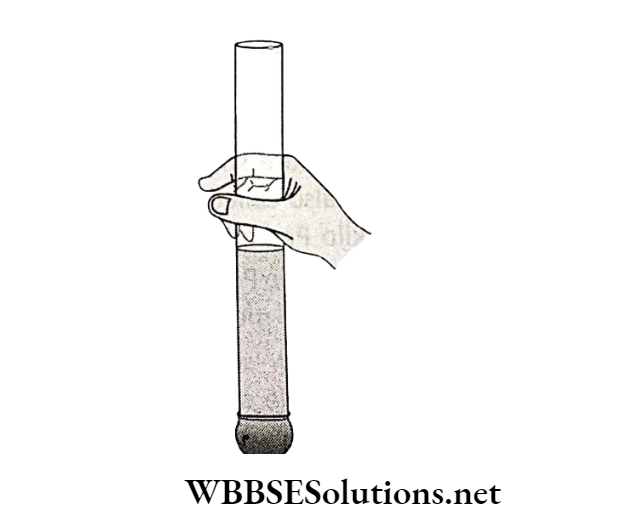
While walking down the streets you must have come across situations. where fountains of water are seen to come out of the leaking joints or holes in municipal water pipes supplying water to the city.
This happens due to the pressure exerted by the water on the walls of the pipes. When you inflate a balloon, you have to tightly close the mouth immediately or else the balloon deflates rapidly leaking out all the air.

A balloon having holes on its surface can not be inflated. This proves that air or for that matter, gases, too, exert pressure on the walls of the container.
However, unlike solids, a fluid exerts pressure in all directions. This may be demonstrated using an empty plastic water bottle. The bottle may be filled with water.
If several holes are made all around near the bottom of the bottle, water would be seen coming out of the holes.
If fingers are placed in the holes, one can feel the force of water acting on the fingers. The same thing occurs at various points on the surface of the bottle.
This proves that water contained in the bottle exerts force or thrust below its free surface at all points on the surface of the bottle.
The force per unit area at any point gives the pressure of water at that point.
The pressure which a fluid exerts on the sides of the containing vessel, below its free surface, is called lateral pressure and the pressure at the base of the vessel is simply called pressure.
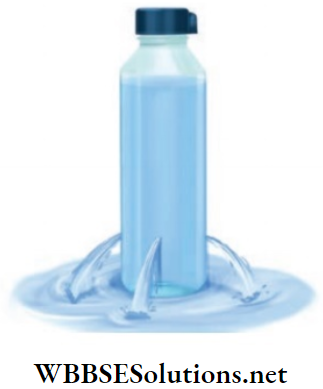
Chapter 7 Statics And Dynamics Of Fluid Liquid And Gas Atmospheric Pressure
The envelope of air surrounding us is called the atmosphere. It extends up to many kilometers above the surface of the earth. The pressure exerted by this column of air is known as atmospheric pressure.
If we imagine a unit area on our head as shown in and a very long cylinder standing on it filled with air, then the weight of air belonging to this cylinder shall be the atmospheric pressure.
The reason we are not crushed under this weight of the air column is that the pressure inside our bodies is also equal to the atmospheric pressure and it cancels the pressure from outside.
Why do some passengers suffer from nose bleeding in pressurized aircraft cabins? As the altitude increases.
The air pressure decreases around passengers and therefore this can cause nose bleeding in some cases since the pressure inside the human body becomes more than that at the outside at higher altitudes.
The cabin is pressurized but not as much as it is at sea level. Therefore, it’s common among many people to have nose bleeding and is not usually a serious problem.

Understanding Statics and Dynamics of Fluids
Chapter 7 Statics And Dynamics Of Fluid Liquid And Gas Effect of Pressure
There are certain laws of liquid pressure. These are as follows:
- Pressure at a point inside the liquid increases with the depth from the free surface of the liquid.
- Pressure is the same at all points in a horizontal plane at a given depth within the liquid.
- A liquid flows from a place of higher pressure to a place of lower pressure.
- A liquid seeks its own level.
Now we would explain one after another with simple demonstrations. Let us take the first law which states that pressure increases with the depth of a liquid from the free surface.
Let us prove it with the following example. A plastic bottle filled with water may be taken similar to the one shown earlier.
Three holes shall be made in the bottle one above another from top to bottom in a line.
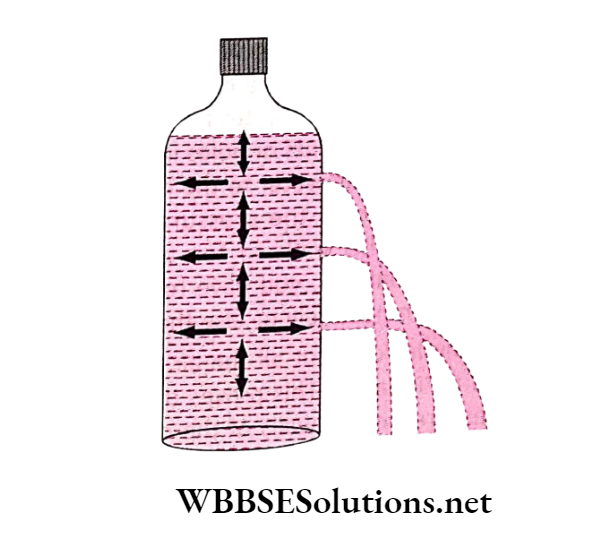
It would be found that the flow of water from the bottommost hole travels furthest because the pressure exerted at this point is the highest since this hole is situated at maximum depth from the free surface of the water.
Earlier, we saw that if some water is poured into a glass tube while holding it in the middle in an upright condition with a stretched rubber sheet tied at its end, the rubber sheet bulges out due to the pressure of water.
Now if some more water is poured into the tube it would be seen that the amount of bulge increases.
So there is a direct relation between the amount of bulge or pressure exerted by water and the height of the water column.
This proves that pressure at a point inside the liquid increases with the depth from the free surface of the liquid.
If two completely filled containers are taken having varying depths, the pressure at the base is greater whose depth is greater.
When these two containers are joined by a pipe, water or liquid flows from the container having greater depth to the other one. This applies to gas also.
Thus a fluid (gas or liquid) flows from a place of higher pressure to a place of lower pressure. This fact is made use of in supplying water to the different parts of a city.
Drinking water is raised with a pump to the main reservoir placed at such a great height that taps, tanks, etc in domestic and public uses at different parts of a city are much below it.
From the reservoir, the main pipe goes through the city and smaller pipes branch off from the main pipe and are led to different houses in the city.
Examples of Real-Life Applications of Fluid Statics
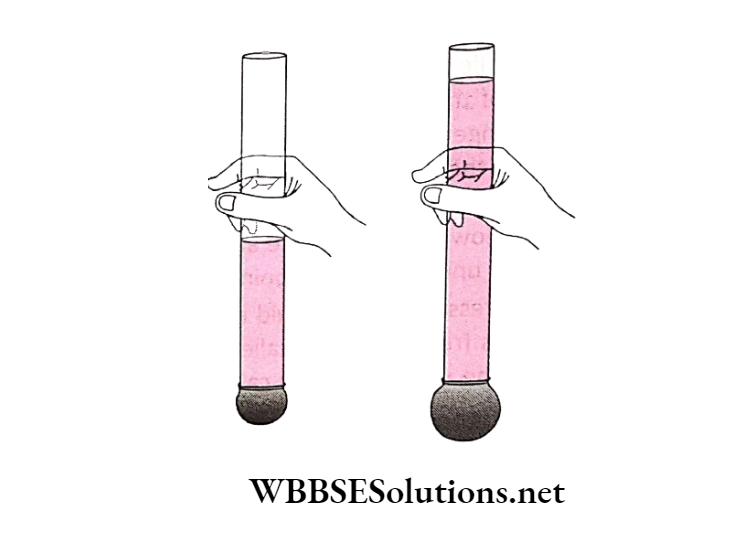
Since liquid flows from a higher level to a lower level, when water from the reservoir is allowed to flow through the pipes, water would easily reach every house in the city.
Due to the same reason, the pressure of water at the tap on the first or second floor of a house is less than the pressure on the ground floor.
Now come to the second law which states that pressure is the same at all points in a horizontal plane at a given depth within the liquid.
This point can be demonstrated by the experiment with the same plastic bottle as described earlier.
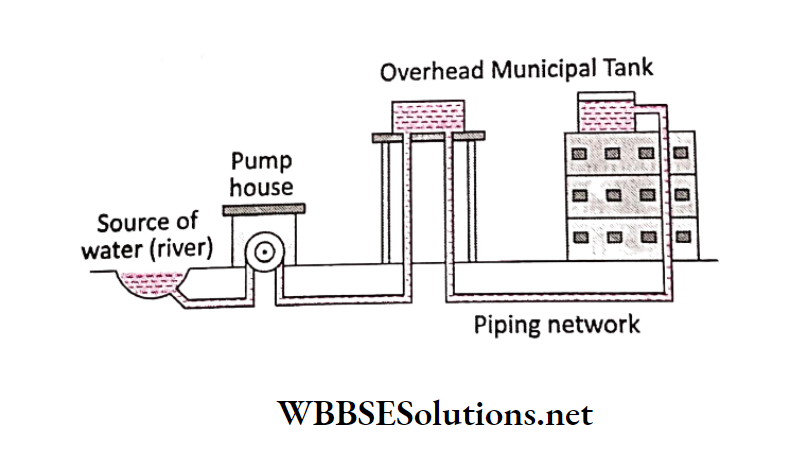
If several holes are made at the same depth from the free surface of the liquid, it would be seen that the flows of water from all the holes travel the same because the pressure exerted at this horizontal level is the same for all the holes.
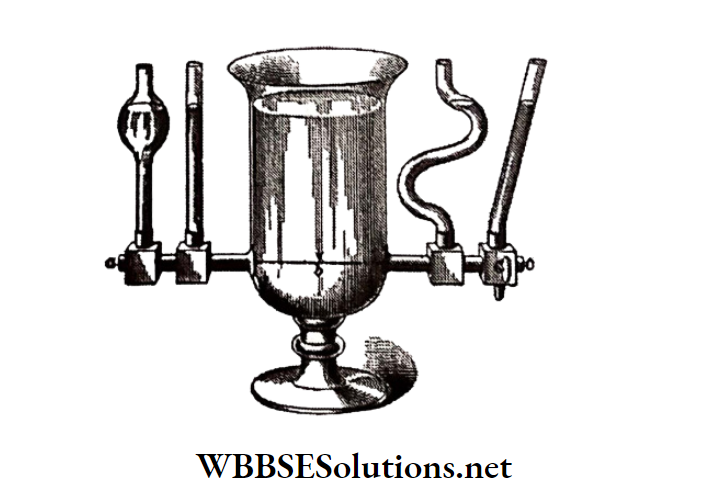
To prove that a liquid seeks its own level, a peculiar-shaped apparatus may be taken which consists of a number of tubes of different shapes and sizes connected together at the bottom.
This vessel is known as communicating vessel since a number of tubes/vessels are in communication with one another.
If water is poured into one of the tubes, then water flows into each tube till the water level in all the tubes become equal. The surface of the water in every tube is found to be horizontal.
Real-Life Scenarios Involving Buoyancy and Density
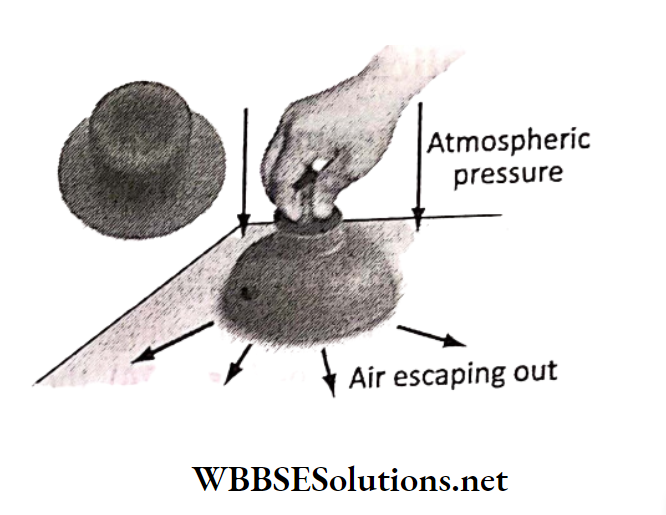
The effect of atmospheric pressure can be easily demonstrated with the help of a rubber sucker. It looks like a small rubber cup.
If it is pressed against a smooth hard surface like the glass table top, it gets stuck to the surface.
It now becomes difficult to pull it out of the surface. As the sucker is pressed, most of the air between it’s cup and the hard surface escapes out.
The sucker sticks to the surface because of the outside pressure of the atmosphere that acts on it.
To pull the sucker off the surface, the applied force should be large enough to overcome the atmospheric pressure.
Chapter 7 Statics And Dynamics Of Fluid Liquid And Gas The Concept Of Bernoulli’s Principle
You know the behavior of a river in a wide, unconstricted region, it flows slowly, but if its flow is narrowed by canyon walls (for instance), then it speeds up dramatically.
Now imagine that fluid moves from a wider pipe to a narrower one. Certainly, the volume of that fluid that moves a given distance in a given time period does not change.
But since the width of the narrower pipe is smaller, the fluid must move faster in order to achieve that result.
Bernoulli’s principle states that a slow-moving fluid exerts more pressure than a fast-moving fluid.
Since “fluid” in this context applies equally to liquids and gases, the principle has as many applications with regard to airflow as to the flow of liquids.
We shall illustrate the above principle with another example. Suppose there is a room full of children.
If each child is asked to run at top speed, children will start bouncing off each other and the walls resulting in a number of collisions.
Now if those same children are taken out of the room and again asked to run down a wide hall at top speed, they would be all said? running together.
This time all collisions between children are much more gentle than before since they are all running in the same direction.
The children in both cases may Be taken as the atoms in the fluid and the force of the collisions represents the pressure between those atoms.
In the first case, when the speed of the group as a whole is zero, the jostling (or pressure) is high. In the second case, when the speed of the group as a whole is large, the jostling (or pressure) is low.
Hence Bernoulli’s conclusion The slower the rate of flow of a fluid, the higher the pressure, and the faster the rate of flow, the lower the pressure.
Take a piece of folded paper and hold them. in front of your mouth. Blow air in between the. papers, as shown in The papers, come.
closer instead of going apart. When air moves faster in between the papers (due to blowing), the pressure decreases in that region. The force.
exerted by air outside the papers act perpendicular to the outer surface of the two sheets and push them together.
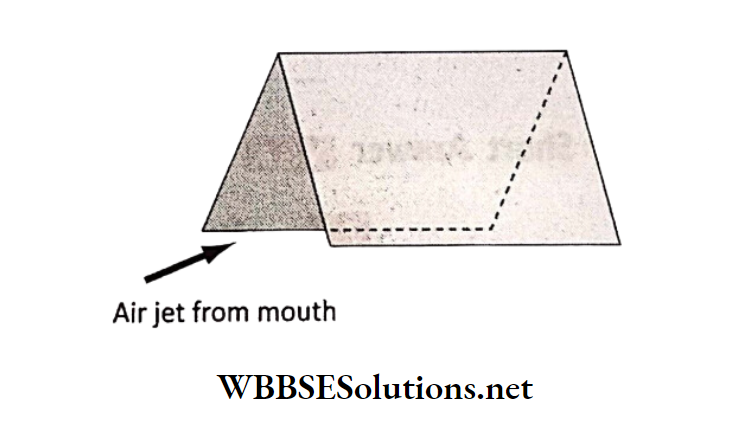
Chapter 7 Statics And Dynamics Of Fluid Liquid And Gas Application Of Bernoulli’s Principle
One of the most common everyday applications of Bernoulli’s principle is in air flight. The main way that Bernoulli’s principle works in air flight has to do with the architecture of the wings of the plane.
In an airplane wing, the top of the wing is somewhat curved, while the bottom of the wing is totally flat. While in the sky, air travels across both the top and the bottom of the wing concurrently.
Because the top part and the bottom part of the wing are designed differently, this allows for the air on the bottom to move slower, which creates more pressure on the bottom, and allows for the air on the top to move faster, which creates less pressure.
This is what creates a lift, which allows planes to fly.
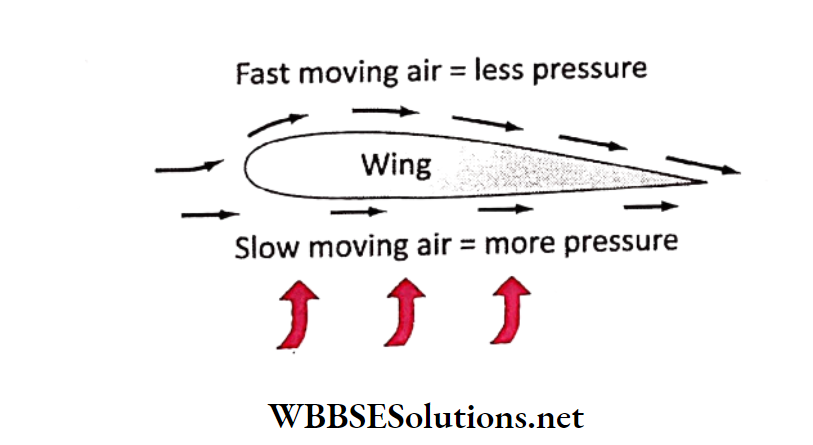
A person standing near the railway track is pulled towards the train when a fast-moving train passes close to him. The fast-moving train decreases the pressure between the person and the train.
Due to the greater pressure on the other side of the person, the person gets pushed toward the railway track.
This is why people are warned to move away from the edge of the platform when a fast-moving train is supposed to pass through it without stopping.
Tornados do not tear off roofs. It is the higher air pressure inside the house that exerts a force on the roof to lift it.
The faster the outside air moves, the lower its air pressure, and the greater force on the roof results from within. As long as the inside and outside air pressures remain the same, the roof stays up.
If the outside pressure is lowered significantly by the high winds of a tornado, the ceiling just lifts up, like a bird’s wing due to the greater atmospheric pressure below the roof.
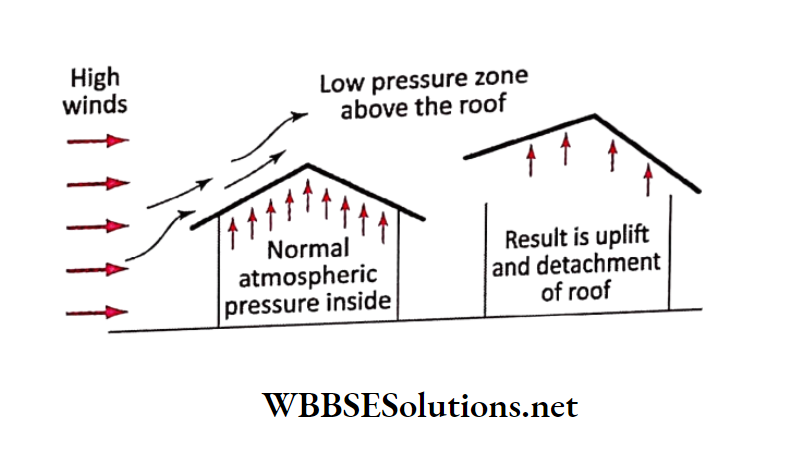
If the area of the cross-section at one end of a hose pipe is reduced by pressing with a finger, the velocity of water flow increases there.
This happens because due to the decrease in the cross-section of the pipe, the pressure of water is decreased there.
So, according to Bernoulli’s theorem, the velocity of water flow increases there. For the same reason if the area of the mouth of a water tap is reduced with a thumb, water from the tap falls with more speed.
